You’ll capture stunning underwater footage with the Insta360 X4, which stands out as the top waterproof 360 camera for immersive dives, offering 8K video quality and waterproofing up to 33 feet without additional housing. The GoPro Max provides excellent 5.6K stitched video for depths up to 16 feet, while the Kandao QooCam 3 offers budget-friendly options at $299. Essential features include FlowState stabilization, extended battery life, and IPX8 certification. Discover thorough comparisons of depth ratings, mounting accessories, and value analysis below.
Top Waterproof 360 Cameras for Deep Sea Adventures
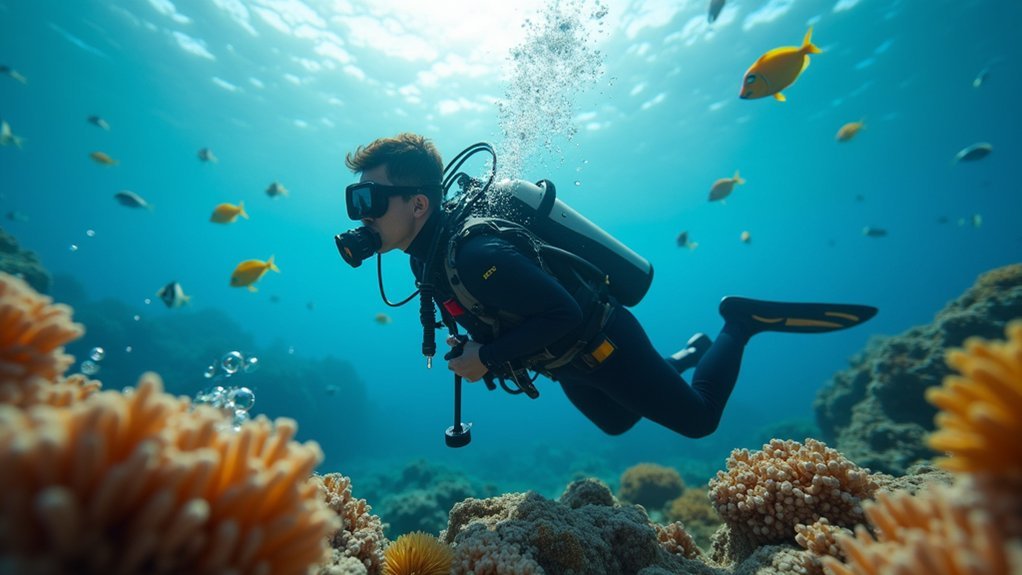
The depths of our oceans hold countless mysteries waiting to be recorded in stunning 360-degree detail. When you’re planning deep sea adventures, you’ll need waterproof 360 cameras that can withstand extreme conditions while delivering exceptional performance.
The Insta360 X4 stands out as a premier choice for underwater exploration. You’ll appreciate its impressive waterproofing up to 33 feet without additional housing, extending to 164 feet with the Invisible Dive Case.
With waterproofing up to 164 feet using the Invisible Dive Case, the Insta360 X4 excels in serious underwater exploration.
Its 8K video quality guarantees your immersive footage captures every underwater detail with remarkable clarity.
You’ll benefit from FlowState Stabilization and 360° Horizon Lock technology, which eliminates shake during dynamic diving activities. The camera’s cold-resistant design performs reliably in harsh marine environments, while AI-powered editing tools help you create engaging content effortlessly.
Essential Features to Consider for Underwater 360 Recording
When you’re selecting a 360 camera for underwater recording, waterproof depth ratings stand as your first line of defense against equipment failure.
You’ll want to prioritize cameras with at least IPX8 certification that can handle depths up to 33 feet without additional housing.
Don’t overlook underwater video stabilization features like FlowState technology, which you’ll need to counteract the constant motion and buoyancy changes that occur beneath the surface.
Waterproof Depth Ratings
Depth ratings determine how deep you can safely take your 360 camera underwater without risking damage to the device. For recreational underwater filming, you’ll need cameras with depth ratings of at least 10 meters (33 feet).
The Insta360 X3 and GoPro Max both meet this standard, making them excellent choices for most diving adventures.
The Insta360 X4 stands out by operating without additional cases up to 10 meters, though diving cases can extend its range to 60 meters (197 feet) for serious deep-water exploration.
When evaluating waterproof capabilities, prioritize cameras with IPX8 ratings, ensuring they’ll withstand continuous water immersion.
Don’t forget to take into account battery life and FlowState stabilization features, which enhance your underwater recording experience during extended dives.
Underwater Video Stabilization
Since underwater currents and natural body movements create constant motion challenges, you’ll need 360 cameras equipped with advanced stabilization technology to capture professional-quality footage.
FlowState stabilization stands out as the gold standard, minimizing shake and distortion even in turbulent underwater conditions.
When evaluating waterproof camera options for diving, prioritize these stabilization features:
- Advanced gyroscope sensors that detect and compensate for sudden movements in real-time
- AI-powered stabilization algorithms that analyze motion patterns and apply intelligent corrections
- High-resolution video capture capabilities (5.7K or higher) that maintain clarity despite stabilization processing
Modern stabilization systems work seamlessly with editing tools, allowing you to fine-tune footage during post-production.
This combination of hardware-based video stabilization and software enhancement guarantees your underwater adventures translate into smooth, professional-quality content.
Depth Ratings and Waterproof Performance Comparison
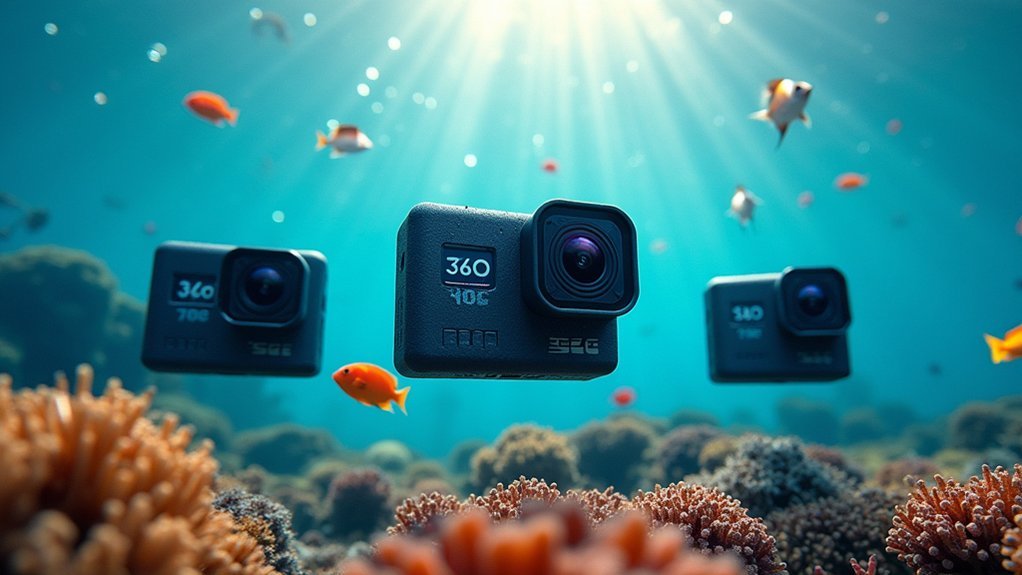
You’ll find significant differences in maximum depth limits when comparing waterproof 360 cameras, ranging from shallow 16-foot ratings to impressive 164-foot capabilities with protective cases.
Each camera undergoes rigorous pressure resistance testing to guarantee it won’t fail at its rated depth, but you can’t rely on these ratings alone.
Understanding how manufacturers test and validate these limits will help you choose the right camera for your specific underwater recording needs.
Maximum Depth Limits
When choosing a waterproof 360 camera for underwater adventures, understanding each model’s depth limitations will determine which environments you can safely explore.
The Insta360 X4 leads with 33-foot waterproof capability without additional housing, perfect for immersive filming in pools and shallow dives. You’ll need the Invisible Dive Case to reach its maximum 164-foot depth for serious underwater exploration.
- Shallow Water Cameras: GoPro Max and Insta360 ONE RS One Inch Edition both handle 16 feet, ideal for snorkeling adventures.
- Limited Splash Protection: Kandao QooCam 3’s 10-foot rating suits poolside filming but restricts deeper underwater use.
- Professional Depth Access: Only the X4 with dive case reaches true diving depths of 164 feet.
Your depth requirements should guide your camera selection for best underwater performance.
Pressure Resistance Testing
Although manufacturers advertise depth ratings prominently, these waterproof specifications don’t tell the complete story of how cameras perform under real diving conditions.
You’ll find that pressure resistance testing reveals significant differences between models during actual underwater use.
The Insta360 X4’s 33-foot waterproof rating demonstrates superior durability compared to action cameras like the GoPro Max, which handles only 16 feet of depth pressure.
Meanwhile, the X3 matches the X4’s performance with enhanced resistance to extreme conditions.
The Ricoh Theta X’s limited 3.3-foot rating shows minimal pressure tolerance, restricting serious dive applications.
When you’re planning underwater adventures, consider that sustained pressure exposure often challenges cameras beyond their advertised limits.
Real-world testing conditions frequently exceed controlled laboratory environments where these depth ratings originate.
Image Quality and Video Resolution in Aquatic Environments
Beneath the surface, image quality becomes paramount as water naturally filters light and can diminish color accuracy in your footage.
You’ll need exceptional video resolution to capture high detail in challenging underwater conditions. The Insta360 X4 delivers stunning 8K capabilities and 5.7K at 60fps, ensuring your immersive footage maintains clarity despite aquatic environments.
Meanwhile, the GoPro Max’s 5.6K stitched quality provides reliable waterproof performance up to 5 meters.
- Advanced stabilization systems like FlowState technology compensate for water movement, delivering smooth footage
- High-resolution sensors capture vibrant underwater landscapes with the Insta360 X3’s 5.7K video and 72MP images
- Color accuracy features in cameras like the Ricoh Theta X preserve natural tones during scuba diving excursions
Battery Life and Storage Requirements for Extended Dives
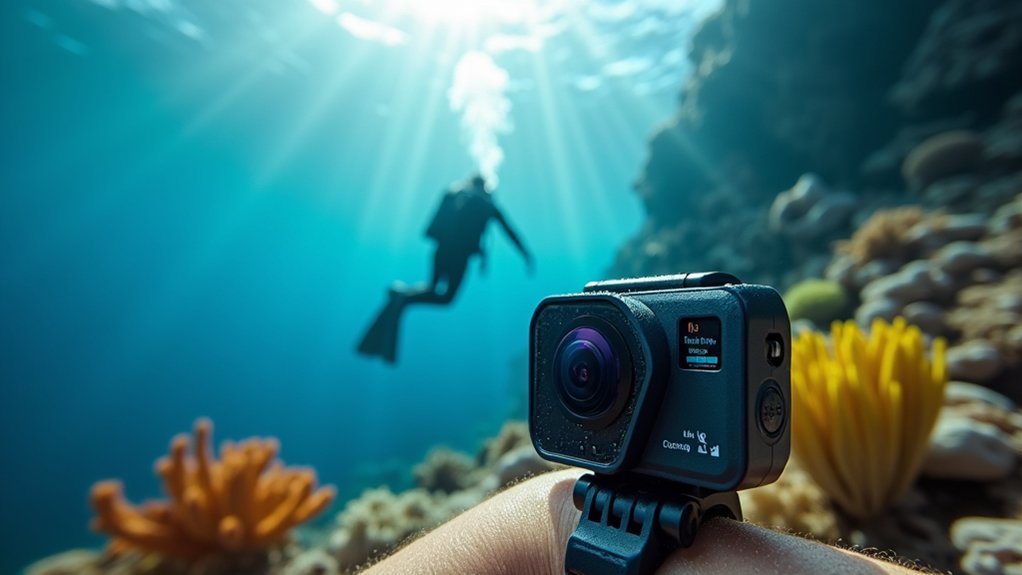
Since extended underwater adventures demand reliable power and ample storage capacity, you’ll need to carefully plan your battery and memory card strategy before descending. Battery life varies greatly between models, making this essential for extended dives.
| Camera Model | Battery Life | Storage Capacity |
|---|---|---|
| Insta360 X4 | 135 minutes | Up to 1TB microSD |
| GoPro Max | 78 minutes | Up to 256GB microSD |
| Insta360 X3 | 81 minutes | Up to 1TB microSD |
| Kandao Qoocam 3 | 30 minutes | Up to 512GB microSD |
For peak performance during high-resolution video capture, use UHS-I V30 rated microSD cards. These guarantee efficient data transfer rates necessary for 5.7K recording. The Insta360 X4’s impressive 135-minute runtime makes it ideal for extended dives, while shorter-lived cameras require backup batteries to meet storage requirements.
Mounting Options and Accessories for Underwater Photography
While capturing stunning 360-degree footage underwater requires the right camera, you’ll need proper mounting options and accessories to achieve professional results.
The invisible selfie stick creates seamless immersive underwater shots by disappearing from your 360-degree footage, while specialized dive cases like the Invisible Dive Case protect your camera at depths up to 164 feet.
Essential accessories for underwater photography include:
- Buoyancy aids and floaty grips – Prevent camera loss while diving and keep equipment visible
- Chest straps and helmet mounts – Provide hands-free operation for snorkeling and diving activities
- Tripod adapters and extension poles – Stabilize shots underwater for smooth video capture
These mounting solutions guarantee you’ll capture unique perspectives while exploring aquatic environments safely and effectively.
Price Analysis and Value for Professional Dive Documentation
Professional underwater 360 cameras come with varying price points that directly impact the quality and capabilities of your footage.
When conducting a price analysis, you’ll find that waterproof 360 cameras range from budget-friendly options like the Kandao Qoocam 3 at $299.99 to premium models such as the Ricoh Theta X at $799.95.
For professional dive documentation, the Insta360 X4 offers exceptional value at $499.99 with 8K high-resolution video and robust durability.
The GoPro Max provides similar pricing with 5.6K capabilities, while the Ricoh Theta X commands a premium for its 60.5MP stills.
You’ll need to balance your budget against essential features like resolution, waterproof ratings, and AI editing support to maximize value for your specific dive documentation requirements.
Frequently Asked Questions
What Is the Best 360 Camera for Virtual Tour?
You’ll find the Ricoh Theta X delivers exceptional virtual tours with its 60.5MP stills and automated HDR mode. The Insta360 X3’s user-friendly editing software also makes it excellent for creating immersive real estate experiences.
Are 360 Cameras Waterproof?
Most 360 cameras aren’t inherently waterproof, but many models like the Insta360 X3 and GoPro Max offer waterproof ratings up to 10 meters, with some featuring enhanced dive cases for deeper underwater filming.
What Is the Disadvantage of a 360 Camera?
You’ll face shorter battery life, complex editing requirements, bulkier designs, and weaker low-light performance. You’ll also deal with limited stabilization during movement, making 360 cameras more challenging than traditional cameras.
Is Insta360 3x Waterproof?
Yes, you’ll find the Insta360 X3 is waterproof up to 10 meters without additional housing. You can dive deeper using protective cases, but it’s naturally water-resistant for shallow underwater adventures.


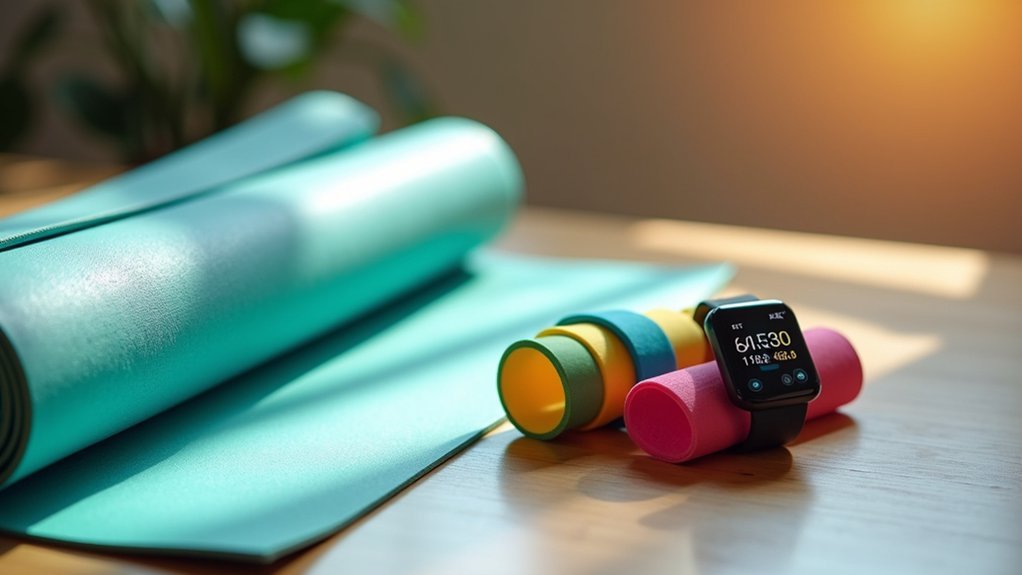
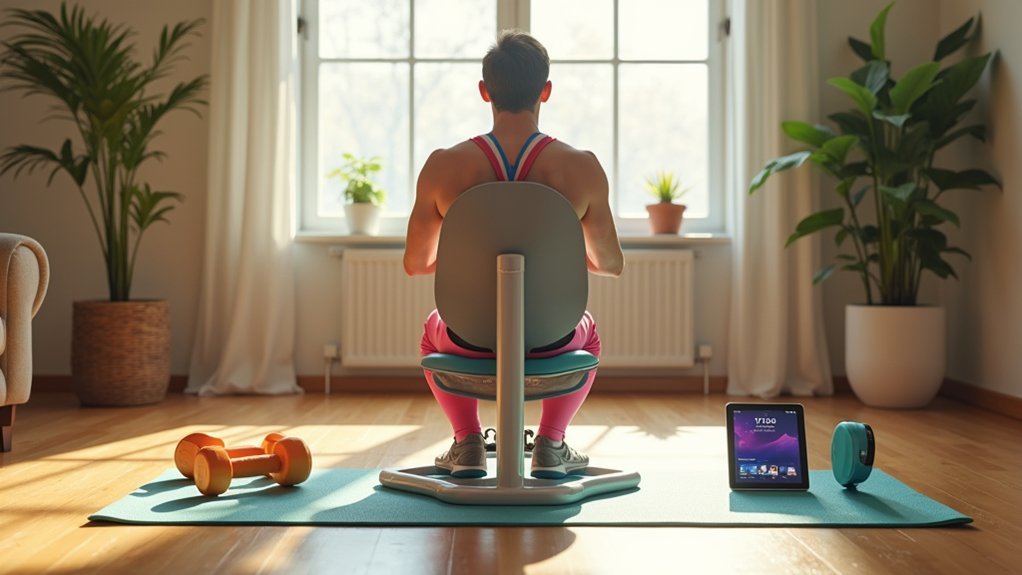

Leave a Reply